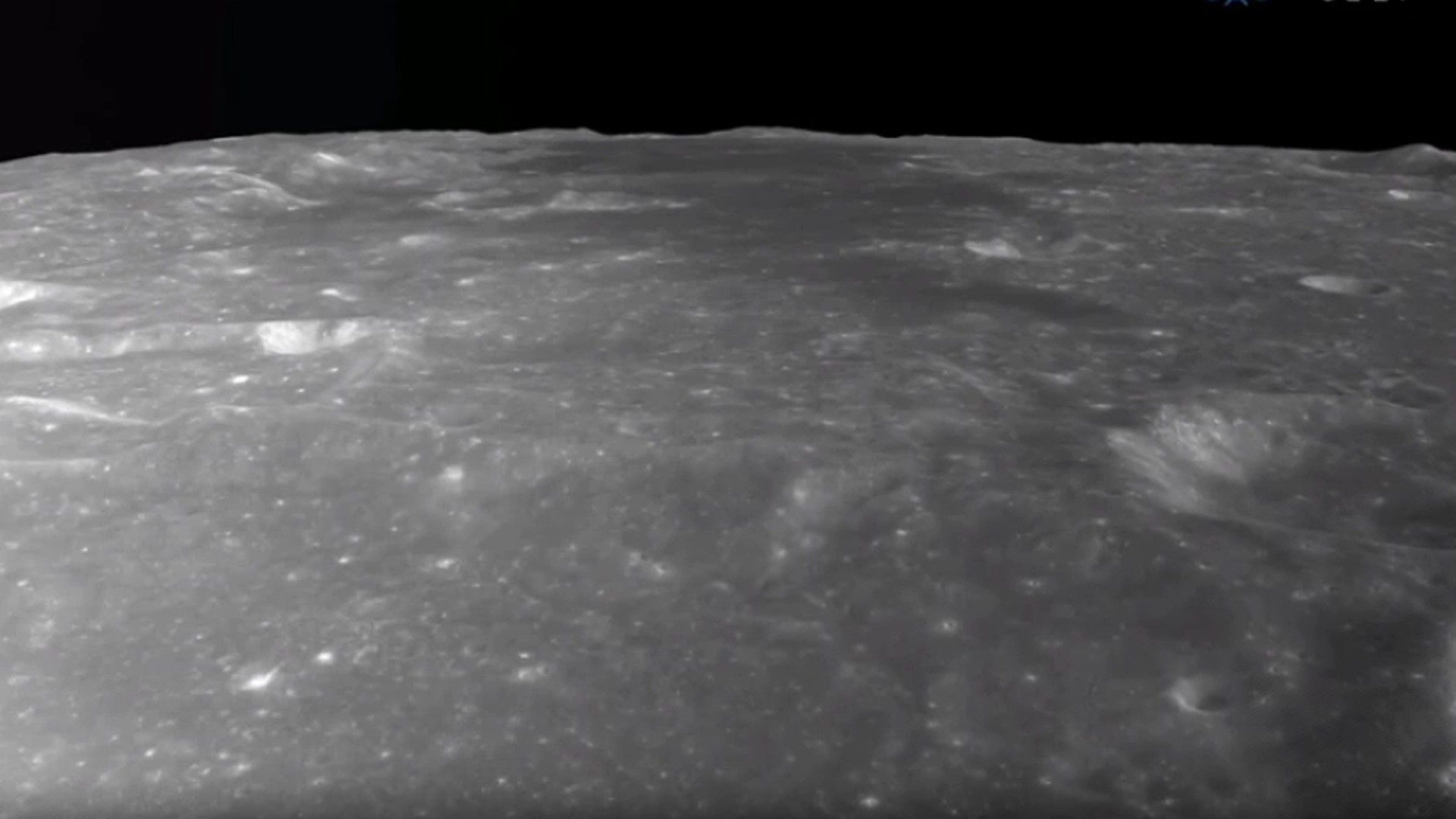
China's lunar sample collection mission Chang'e 6 has made history by successfully touching down on the far side of the moon, and it even sent back a stunning video of its landing.
The China National Space Administration (CNSA) probe arrived at the moon on Sunday (June 2 at 6:23 a.m. Beijing Time, which was 6:23 p.m. on Saturday (June 1) EDT (2223 UTC). The video footage was filmed by the Chang'e-6 lander's landing camera. It shows the spacecraft's close approach to the lunar surface as well as its touchdown.
The video shows a region of the moon that humanity never gets to see from Earth. That's because the moon is tidally locked, meaning one of the lunar hemispheres perpetually faces our planet while the other always faces away into space.

Missions to the far side of the moon have been rare, with the near side much easier to reach and explore; thus far, China is the only country to achieve a soft landing on the far side of the moon. NASA's Ranger 4 was the first spacecraft to touch down on the far side of the moon in 1962, but this was a crash landing, and it failed to send any data back to Earth. This is the CNSA's second lunar landing on the moon's far side. In January 2019, the Chang'e 4 mission deposited a lander-rover combo to the hidden lunar hemisphere.
Related: The cold lunar night may have finally swallowed Japan's SLIM moon lander
Humanity's first glimpse of this elusive hemisphere of the moon came in 1959, thanks to a grainy view from the former Soviet Union's Luna 3 spacecraft. Then, in 1968, as part of the Apollo 8 moon-orbiting mission, astronaut William Anders delivered incredible footage of the lunar far side to Earth. The Apollo 8 crewmembers were the first people to set eyes on this lunar region without the aid of any optical devices.
The Chang'e 6 video shows the new mission is already shedding light on a mysterious region of Earth's familiar lunar companion.

The landing zone of Chang'e 6, which is named after a moon goddess in Chinese mythology, is in the South Pole-Aitken Basin, a vast 1,600-mile (2,500-kilometer) wide and 4-mile to 5-mile (6.4 to 8-kilometer) deep impact crater.
Chang'e 6, which launched on May 3 and entered lunar orbit four days later, will now spend several days using its onboard drill to collect lunar dirt, or "regolith," and rock from around its landing site. If everything goes according to plan, Chang'e 6's landing won't be its only historic moment. The CNSA intends to use the robotic mission to return 4.4 pounds (2 kilograms) of lunar material back to Earth.
"The Chang'e-6 mission is the first human sampling and return mission from the far side of the moon," CNSA officials said in a translated statement. "It involves many engineering innovations, high risks and great difficulty."

Chang'e 6 will launch lunar material to orbit with the rocket that carried its lander unit to the moon on June 2. The Chang'e 6 orbiter, which remained in space around the moon, will pick up the sample container before parachuting it back to Earth on June 25.
Samples returned from the moon's far side will be subject to intense scientific study as researchers attempt to unlock the secrets of this strange lunar hemisphere.
Those studies will include attempting to determine why the moon's near side is scarred with large, dark volcanic plains called "maria" while the far side isn't. Maria are believed to be formed by lava flowing into ancient impact basins.
Chang'e 6 will soon be joined on the moon with further namesake missions. Chang'e 7 is set to launch next year, heading to the moon's south pole region to hunt for stores of water ice, and Chang'e 8 is scheduled to launch in 2028. The latter will also head to the south pole of the moon, but aims to test in-situ uses for the resources Chang'e 7 uncovers and reveal how they could benefit human moon exploration. This comes ahead of the CNSA's plan to send crewed missions to the moon by 2030.







